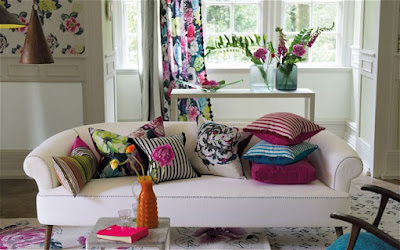Designing office interiors call for creating interior settings to satisfy the client's requirements from a unique space. Every corporate job related to insides demands some generic phases to be followed while moving forward with the office design and fit-out procedure. This include:
1) Programming: An office comprises of different facilities like administrative, hospitality, recreational, food/canteen and each space has its demands and functions. During the programming period, the top architects in nagpur have to take care the design of the office meets the practical requirements of each facility while understanding the user's requirements. He should understand the functional aspect of space allocation requirements, each space and the furniture and accessories needed in each facility. Site visits; surveys, research or meetings with users and customers are the best methods to get a clear idea of the design requirements and expectations.
2) Concept Development: After gaining a strong understanding of the client's necessities through the information compiled, the designer invents its concept in the form of design and diagrams. The concept development phase comprises of distinct sub-stages.
a) Space Planning: Space Planning is an integral element of interior design services as it involves the use of the desired space efficiently. After the completion of the programming phase, designs of space allocations and adjacencies are prepared. Numerous factors need to be contemplated, including the organizational hierarchy, workflow, clients goals and objectives, constructing furniture necessities, regulatory codes, relaxation, flexibility and future needs while planning for the successful space utilization of an office space. Depending on whether the client's office promotes individual work or teamwork, the office space is planned so.
The designer should understand the aesthetic as well as the scientific aspect of light. Quality together with the amount of light matters too, for creating a cozy and healthy office workplace. Hence, top architects in nagpur should consider illumination that not only accentuates the interiors and boosts efficacy but also meet the building codes and light plays an essential part in establishing the atmosphere of the room and creates a pleasant atmosphere.
c) Color: Color is an important element in any commercial interior design. Since color has the power to arouse an assortment of emotions and psychological states, the interior designer should consider a fine color scheme in the office that improves attention, mood and creates a vibrant working atmosphere.
d) Material Choice: Considering factors including quality, product performance and sustainability, furniture and other accessories are chosen for the office interiors.
3) Design Development: During the design development phase, the designer is very clear about the design objective of the project. He develops other comprehensive drawings, elevations, sections, and floor plans while explaining the finishes, color, furniture and design selections made. This period also involves the budgetary proposal for construction and FF&E items.
The final design draft is prepared, after including all the changes.
5) Building Documents and Procurement: The construction file is essential for any successful design performance. It consists of final sets of records with all the mandatory specifications that may help the contractor to begin constructing the project. Additionally, it consists of the finished program, furnishing material details, etc., specifications furthermore including entire sets of floor plans, elevations, and sections once the construction documents are approved, it really is sent to potential contractors for bidding.
6) Construction Administration: The interior designer needs to supervise the work by paying regular visits to the site. He needs to assess whether the work is in conformity with specifications and the construction drawings.
 |
| top architects in nagpur |
2) Concept Development: After gaining a strong understanding of the client's necessities through the information compiled, the designer invents its concept in the form of design and diagrams. The concept development phase comprises of distinct sub-stages.
a) Space Planning: Space Planning is an integral element of interior design services as it involves the use of the desired space efficiently. After the completion of the programming phase, designs of space allocations and adjacencies are prepared. Numerous factors need to be contemplated, including the organizational hierarchy, workflow, clients goals and objectives, constructing furniture necessities, regulatory codes, relaxation, flexibility and future needs while planning for the successful space utilization of an office space. Depending on whether the client's office promotes individual work or teamwork, the office space is planned so.
 |
| top architects in nagpur |
c) Color: Color is an important element in any commercial interior design. Since color has the power to arouse an assortment of emotions and psychological states, the interior designer should consider a fine color scheme in the office that improves attention, mood and creates a vibrant working atmosphere.
d) Material Choice: Considering factors including quality, product performance and sustainability, furniture and other accessories are chosen for the office interiors.
 |
| top architects in nagpur |
The final design draft is prepared, after including all the changes.
5) Building Documents and Procurement: The construction file is essential for any successful design performance. It consists of final sets of records with all the mandatory specifications that may help the contractor to begin constructing the project. Additionally, it consists of the finished program, furnishing material details, etc., specifications furthermore including entire sets of floor plans, elevations, and sections once the construction documents are approved, it really is sent to potential contractors for bidding.
6) Construction Administration: The interior designer needs to supervise the work by paying regular visits to the site. He needs to assess whether the work is in conformity with specifications and the construction drawings.





































